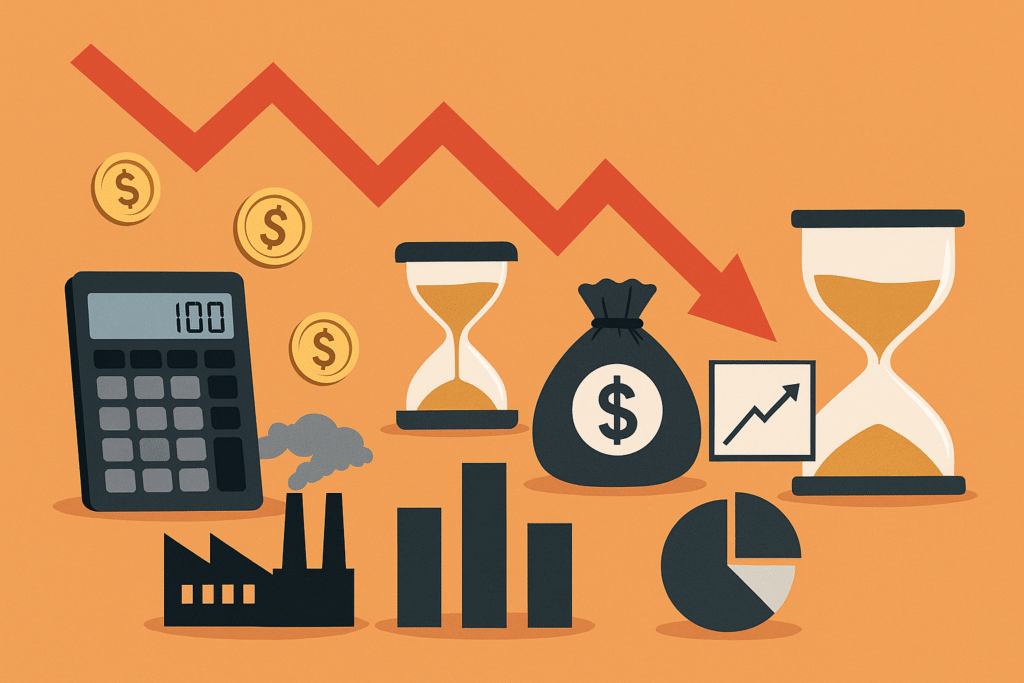How to apply stagflation strategies to investing? Discover in 5 steps
Learn how to apply stagflation strategies to your investments in 5 simple steps. Check out the guide for all the details!
Learn how to apply stagflation strategies to investing

Economic cycles often bring new challenges for investors. Among them, stagflation is one of the most complex scenarios. It combines slow economic growth, high unemployment, and rising inflation, a mix that puts both businesses and consumers under pressure.
For investors, the key question is: how can you protect your portfolio and still seek opportunities during such uncertain times?
The answer lies in adjusting strategies. Below, you will find five steps to apply stagflation strategies to your investments, with practical insights to help navigate this environment.
Step 1: Focus on Inflation Resistant Assets
During stagflation, inflation erodes the purchasing power of money and reduces the value of fixed-income returns. To counteract this, investors often turn to assets that tend to maintain or increase value when prices rise.
Commodities such as gold, oil, and agricultural products have historically acted as hedges against inflation. Gold, in particular, is seen as a safe haven during economic uncertainty.
Real estate can also play a role, since rental income and property values often rise alongside inflation.
- Key takeaway: Include assets in your portfolio that naturally adjust to inflationary pressures, ensuring long-term protection.
Step 2: Rebalance Toward Defensive Sectors
Not all sectors react to stagflation in the same way. Companies in consumer staples, healthcare, and utilities tend to perform better because their products and services remain in demand regardless of economic conditions.
Even in slow-growth environments, people still need food, medicine, and electricity.
Technology and discretionary sectors, on the other hand, may face greater challenges due to reduced consumer spending.
By rebalancing your portfolio toward more resilient industries, you can reduce volatility and stabilize returns.
- Key takeaway: Defensive sectors act as anchors during turbulent economic cycles. Prioritize them without abandoning long-term growth opportunities.
Step 3: Rethink Fixed-Income Investments
Traditional bonds often lose attractiveness during stagflation because inflation reduces real returns. However, this doesn’t mean fixed income should be abandoned, it should be restructured.
Treasury Inflation-Protected Securities (TIPS) in the U.S., for example, are designed to adjust with inflation, protecting purchasing power. Floating-rate bonds may also be beneficial, as their interest payments rise with market rates.
- Key takeaway: Adapt your fixed-income allocation to instruments that align with inflationary environments rather than offering fixed returns that may lose value.
Step 4: Maintain Liquidity and Flexibility
Uncertainty is a defining feature of stagflation. Policy responses from governments and central banks may shift quickly, impacting markets in unpredictable ways. For this reason, maintaining liquidity in your portfolio is essential.
Cash reserves or highly liquid investments provide the flexibility to seize opportunities when markets adjust sharply. They also act as a buffer against unexpected expenses or income fluctuations in personal finances.
- Key takeaway: Liquidity is not wasted capital; it is a strategic tool to remain agile in uncertain environments.
Step 5: Think Globally and Diversify
Stagflation does not impact every country equally. While one economy may face stagnation, others may continue to grow.
By adopting a global perspective, investors can diversify across geographies, reducing exposure to any single country’s challenges.
Emerging markets rich in commodities, for instance, may benefit from higher global demand. Similarly, international bonds or equities may provide returns not directly tied to domestic economic conditions.
- Key takeaway: A global outlook broadens opportunities and cushions your portfolio against localized economic downturns.
Final Thoughts
Stagflation is not an easy environment for investors. The combination of inflation and stagnation creates opposing forces that challenge traditional investment logic. Yet, with the right adjustments, it is possible not only to protect capital but also to uncover opportunities.
By focusing on inflation-resistant assets, shifting toward defensive sectors, rethinking fixed income, maintaining liquidity, and diversifying globally, you can navigate this complex scenario with greater resilience.
Investing during stagflation requires discipline, foresight, and flexibility. More than ever, success depends on understanding the economic landscape and positioning your portfolio to adapt rather than resist change.





